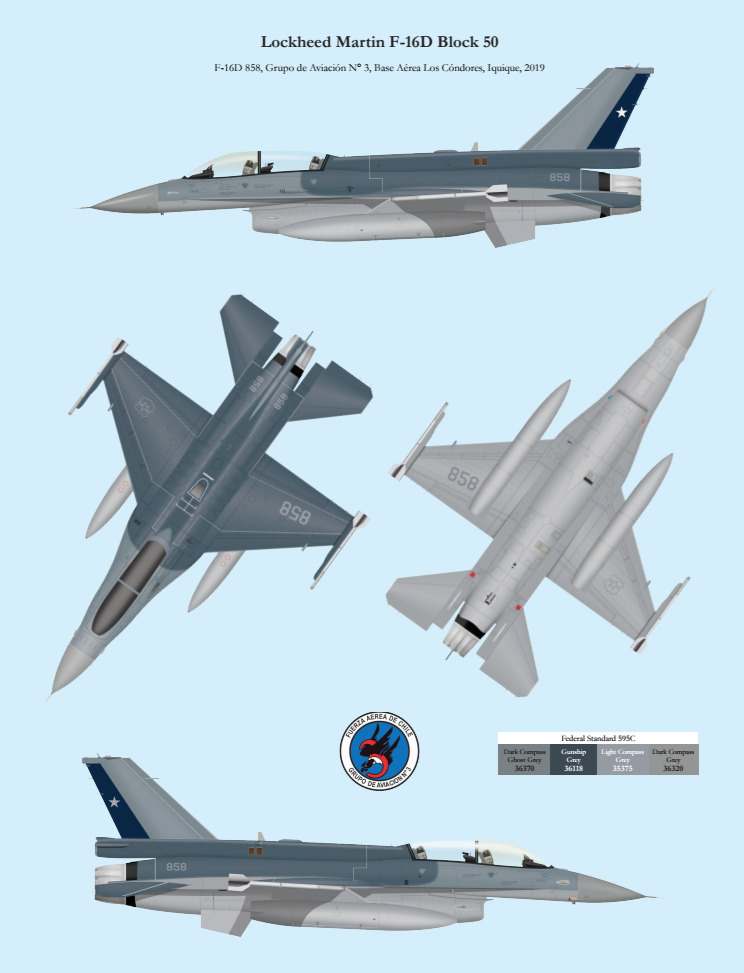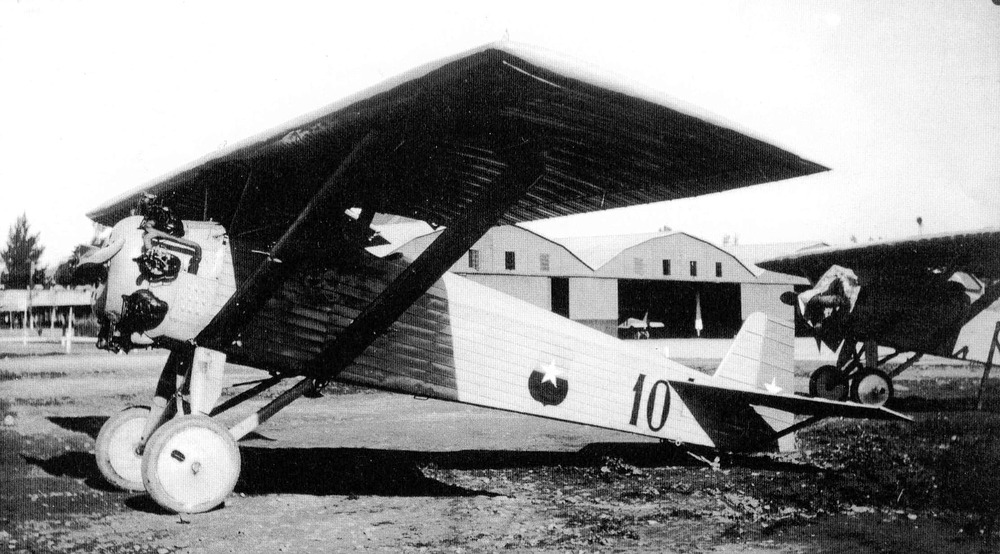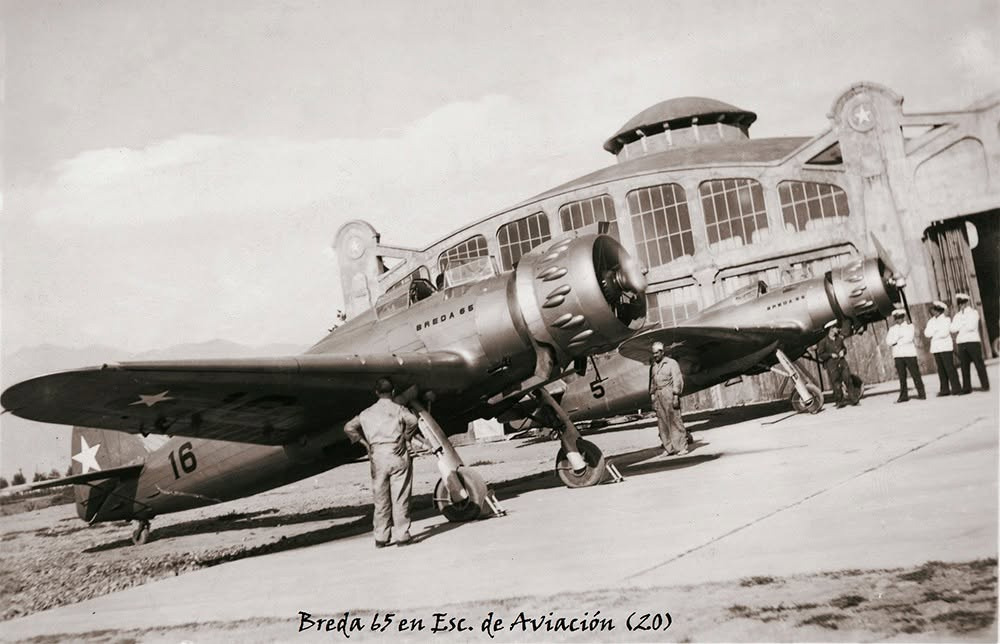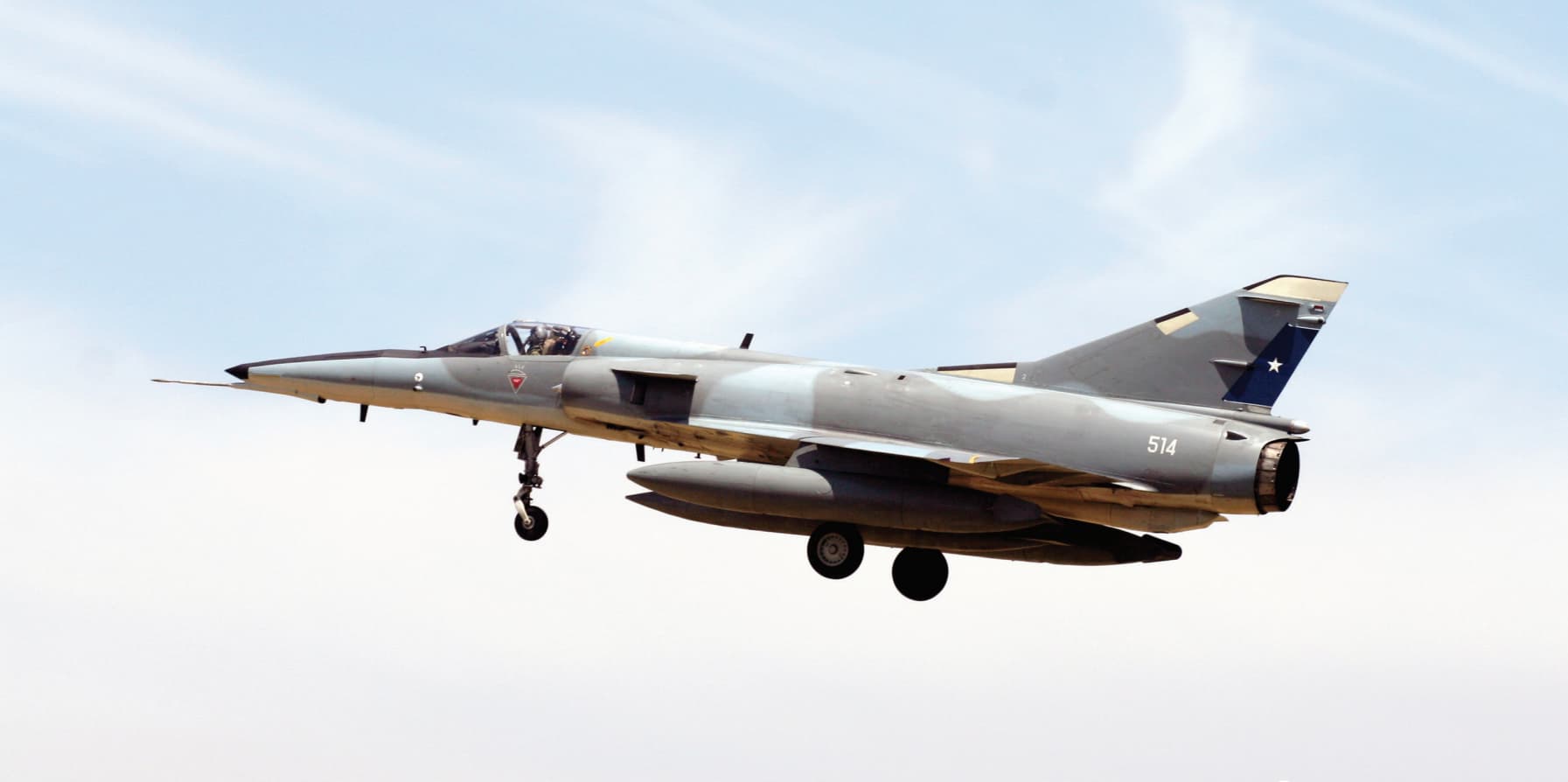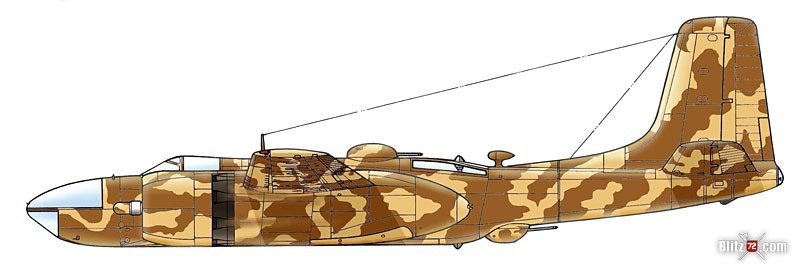- Yes
- No
- Israel
- Future Latin American Tree
- Other
- I said no
This suggestion is a complement to the 3 previous suggestions that I have made which are the Chilean land, naval and helicopter sub tree for Israel, to know the history and details please consult the other 3 suggestions within the forum.
History between Chile and Israel
During the 1970s Chile was going through very tense moments with its 3 neighbors (Argentina, Bolivia and Peru) that had territorial claims and like Israel at the time Chile was politically alone and surrounded by belligerent countries and because Chile was under the government of Dictator Augusto Pinochet accused of crimes against humanity, the country was under an embargo on military purchases. Chile was interested in buying European tanks but no country was willing to sell weapons to Chile for fear of losing its good relations with the United States. This is how Chile turned to Israel, which accepted the request for help. Thus, in 1977, Chile and Israel signed a contract for the purchase of various Israeli tanks, M-51 and M-50 Super Shermans arriving in Chile (both models would later be modified in Chile), and many 60mm IMI HVMS cannons were purchased, Chile being its only user and arming the M24 Chaffee and M-50 with this powerful anti-tank cannon, in this way experienced Israeli instructors traveled to Chile to train the Chilean crews, and created a new doctrine for the Chilean armored forces.

With regard to air warfare material, Israel was also willing to sell the Shafrir II air-to-air missiles to Chile, which would be the main air means to be able to confront the fighters of Chile’s neighbors and which were installed in the Hawker Hunter and F-5 Tiger II, which in those years were the best fighters in Chile. In later years the Griffin LGBs were also purchased and the Python III and IV missiles that would become the main missiles of Chilean fighters. Fortunately, the near-wars that were to occur, mainly with Argentina, were resolved diplomatically at the last second.

Chile and Israel continued to work together on various projects to improve Chilean fighters, such as the Mirage 50CN Pantera, which was modified in its entirety between Chile and Israel, and which gave these fighters an appearance very similar to that of the Israeli Kfir fighters, as well as greatly improved their combat capabilities, turning these Chilean fighters into direct cousins of the Israeli Kfirs. Also noteworthy is IAI’s improvement program called F-5 Plus, where the Chilean F-5 Tiger IIs traveled to Israel for different upgrades and tests and that would make the Chilean F-5 one of the most powerful in the world, being a unique variant.
To this day, the Chilean Air Force continues to work together with the Israeli Air Force and the highest authorities of the countries have exchanged knowledge and strengthened ties, highlighting Israel’s collaboration in the Chilean space program where Israeli companies developed Chilean satellites and the authorities of that country collaborated. It should also be noted that a large amount of Chilean military material is composed of Israeli material in the 3 main military branches of Chile, Army, Aviation and Navy.


Disclaimers:
- Not necessarily all the aircrafts from the following list must be added, they can be chosen according to the convenience of the tree in which it would be implemented and moved as necessary. It was ordered in the best way I found possible.
- The BR of this tree represent the realistic game mode.
- Some data may not be 100% accurate, also some sources may contradict in some aspects such as technical specifications, basically I did what I could with what I found, if anyone has more information I would appreciate it if you share it in the comments section.
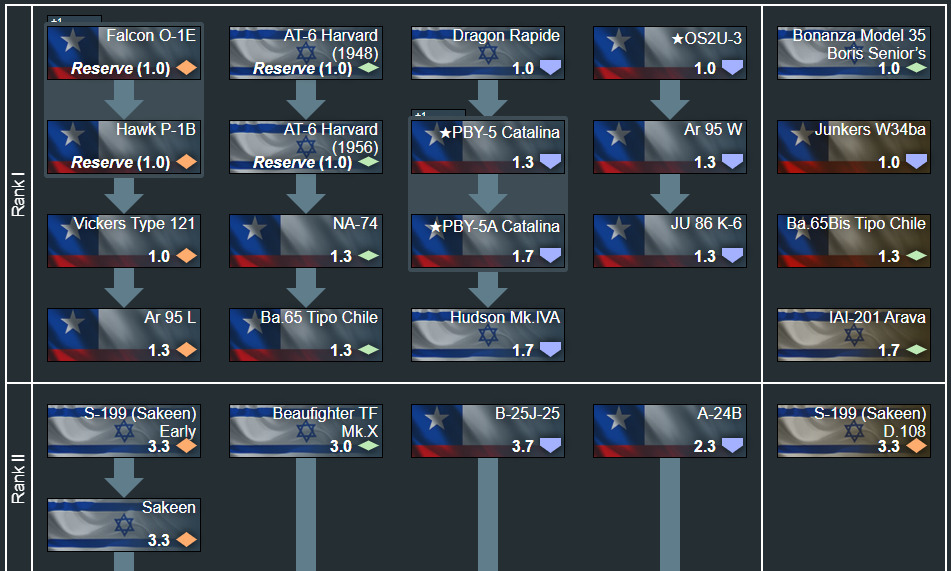
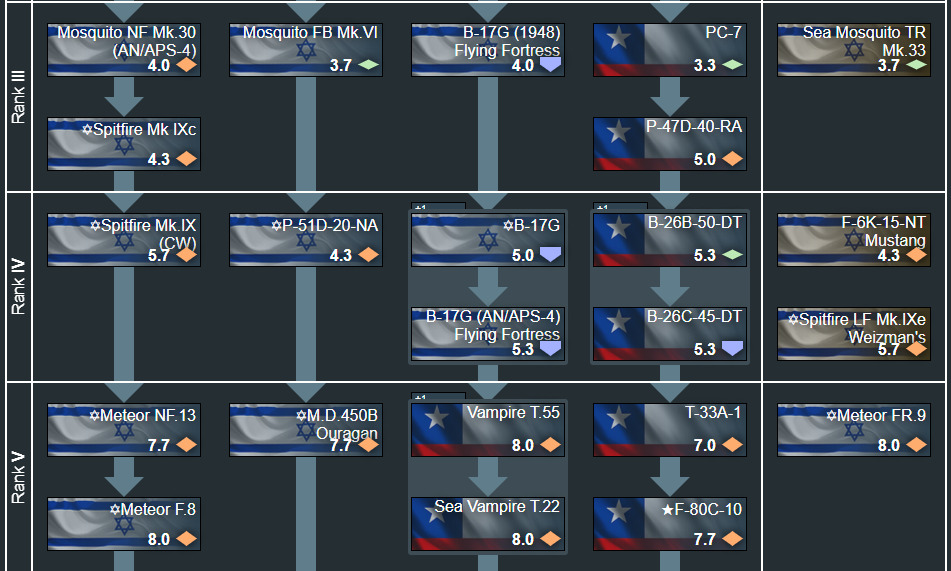
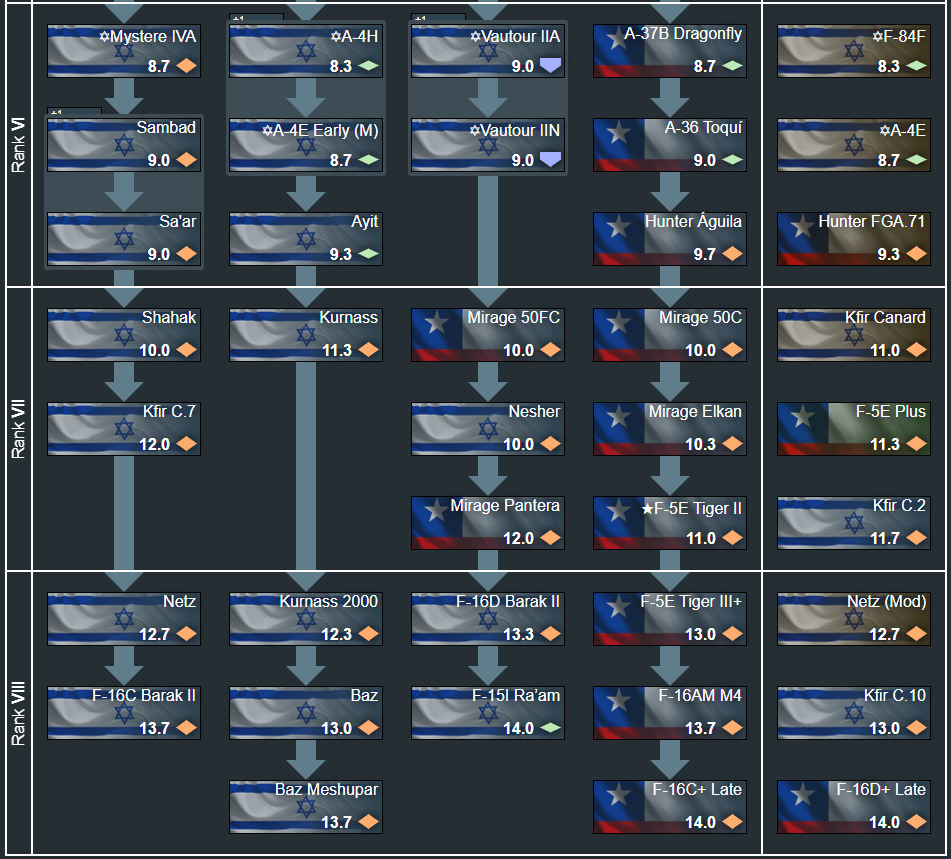
(Israel’s new I-III aircraft are part of the forum suggestion made by @yoyolast and the image shows what the new Israel tree could look like with those new aircraft and with the Chilean sub-tree.)
Aircraft list:
Rank 1
Fighter aircraft:
Falcon O-1E
- Description:
- Aircraft built in Chile under license in 1929, it was called Chilean Falcon by the Curtiss company, the Chilean factory produced several of these aircraft where some were sold to Brazil participating in the civil war of that country. It could carry up to 4 bombs under the wings.
- Year:
- 1929
- Crew:
- 2
- Armament:
- Primary: 1x fixed 7.62 mm Browning machine gun in the nose, 1x 7.62 mm Lewis machine gun mobile in rear turret
- Secondary: 4x 50 lb underwing bombs
- Dimensions:
- Length: 8.3 m
- Wingspan: 11.6 m
- Height: 3.2 m
- Wing area: 32.8 m²
- Empty weight: 1,325 kg
- Gross weight: 1,972 kg
- Performance:
- Powerplant: Curtiss D-12, 435 hp
- Maximum speed: 227 km/h
- Service ceiling: 4,665 m
- Sources:
Hawk P-1B
- Description:
- Nine aircraft of this model were acquired by Chile in 1927, it was a fighter aircraft that had two 7.62 mm machine guns with frontal fire, it could also be equipped with bombs.
- Year:
- 1927
- Crew:
- 1
- Armament:
- Primary: 2× 7.62 mm fixed forward-firing Browning machine guns
- Secondary: 4x 50 lb underwing bombs
- Dimensions:
- Length: 7.01 m
- Wingspan: 9.60 m
- Height: 2.67 m
- Wing area: 23.4 m²
- Empty weight: 996 kg
- Gross weight: 1,349 kg
- Performance:
- Powerplant: Curtiss D-12, 435 hp
- Maximum speed: 249 km/h
- Service ceiling: 6,300 m
- Sources:
- https://museoaeronautico.dgac.gob.cl/wp-content/uploads/2021/12/Historia-de-la-Industria-Aeronautica-Nacional-Tomo-II.pdf
- 90 años de la fábrica Curtiss Wright en Chile
- Bowers, Peter M. (1979). Curtiss aircraft, 1907-1947
Vickers Type 121
- Description:
- Also known as the Wibault Scout, was a British fighter aircraft built by Vickers in the 1920s. It was a licensed version of the French Wibault 7 aircraft, of which 26 were sold to Chile in 1926, where they served until 1934. Chile was the only user of this specific model. It was of all-metal construction and had two forward-firing Vickers 7.7 mm machine guns. Its engine was a British Bristol Jupiter VI of greater power than the French one, which increased its top speed.
- Year:
- 1926
- Crew:
- 1
- Armament:
- Primary: 2x 7.7 mm Vickers machine guns
- Dimensions:
- Length: 7.06 m
- Wingspan: 11.00 m
- Height: 3.51 m
- Wing area: 22.0 m2
- Empty weight: 871 kg
- Gross weight: 1,347 kg
- Performance:
- Powerplant: 1x Bristol Jupiter VI nine cylinder radial engine, 455 hp (339 kW)
- Maximum speed: 248 km/h at sea level
- Service ceiling: 7,000 m
- Sources:
- https://www.fach.mil.cl/images/biblioteca/segundo.pdf
- The British Fighter since 1912
Ar 95 L
- Description:
- Version with fixed landing gear of the German Arado Ar 95, these aircraft were used as reconnaissance, to confront other planes and light attack aircraft since they could carry bombs, because this version has a fixed gear for land missions, they did not carry torpedoes. Only 3 countries operated this plane: Chile, Spain and Nazi Germany.
- Year:
- 1938
- Crew:
- 2
- Armament:
- Primary: 2 × fixed, forward-firing 7.92 mm MG 17 machine guns (1000 rounds) and 1 × flexible 7.92 MG 15 machine gun in rear cockpit (eight discs of 75 rounds each)
- Secondary:
- Bombs: 500 kg of bombs.
- Dimensions:
- Length: 11.10 m
- Wingspan: 12.50 m
- Height: 3.60 m
- Wing area: 45.40 m2
- Empty weight: 2,450 kg
- Max takeoff weight: 3,560 kg
- Performance:
- Powerplant: 1 × BMW 132De air-cooled 9-cylinder radial engine, 656 kW (892 hp)
- Maximum speed: 310 km/h at 3,000 m
- Cruise speed: 255 km/h at 1,200 m
- Service ceiling: 7,300 m
- Rate of climb: 7.5 m/s
- Sources:
- El Observador Aeronáutico: Arado Ar 95 en la FACh
- Arado Ar 95 [Hidroavión de Reconocimiento] - La Segunda Guerra Mundial
- Donald, David, ed. (1994). Warplanes of the Luftwaffe. London: Aerospace Publishing.
- Fernandez, José (January 1994). “L’Arado Ar 95 (2ème partie): L’Arado 95 dans la Fuerza Aerea de Chile”
- Alas de Pioneros: Historia del Grupo de Aviación No. 2 de la Fuerza Aérea de Chile (Aviation Art & History - Chilean Air Force)
- Мировая авиация - Военные самолеты
- https://www.fach.mil.cl/images/biblioteca/segundo.pdf
- Arado Ar 95 W - The little-known German seaplane
Attack aircraft:
NA-74
- Description:
- The NA-74 is the special export version for Chile of the NA-44. In 1940, the contract was signed for the purchase of 12 NA-74 (NA-44) aircraft, which were sent to the country without weapons since the contract did not stipulate it for this reason in Chile they were armed with weapons from the inventory of the FACH, originally these planes were to carry three .30 caliber M2 machine guns but in Chile they were armed with 7mm Madsen machine guns which at that time was the FACH standard (1 in front of the cockpit and 1 on each wing). In 1941, a bombing specialist officer adapted bombs that were in the FACH inventory to be used by the NA-74, these bombs were Vickers bombs of 9.6 and 22.7 kilos, plus the 112 pound ones, also Bofors bombs of 9 and 50 kilos, in this way the NA-74 became efficient attack aircraft.
- Year:
- 1940
- Crew:
- 2
- Armament:
- Primary: 3x 7mm Madsen machine guns
- Secondary:
- Bombs: 300 kg of bombs in four underwing stations (9.6, 22.7 kg, 112 lb Vickers bombs, 9 and 50 kg Bofors bombs)
- Dimensions:
- Length: 8.99 m
- Wingspan: 12.8 m
- Wing Area: 23,57 m²
- Height: 3.58 m
- Weight: Empty: 1886 kg
- Performance:
- Powerplant: Pratt and Whitney R-1340 AN-1, 550 hp
- Max. Speed: 330 km/h
- Service Ceiling: 6555 m
- Sources:
Ba.65 Tipo Chile
- Description:
- Single-seat version of the Italian Breda Ba.65 attack aircraft. The Chilean aircraft had a special designation given by the manufacturer since they were different from the original version, these Chilean aircraft had a 14-cylinder Piaggio P.XI R.C.40 engine and the Italian-made Breda-SAFAT machine guns were replaced by Danish Madsen machine guns of 12.7 mm and 7.62 mm caliber that in those years were the standard for Chilean aviation.
- Year:
- 1939
- Crew:
- 1
- Armament:
- Primary: 2x Danish Madsen 12.7 mm machine guns, 2x Danish Madsen 7,62mm machine guns
- Secondary:
- Bombs: 20x 10 kg bombs , 4x 100 kg bombs, 4x 50 kg bombs
- Dimensions:
- Length: 9.3 m
- Wingspan: 12.1 m
- Height: 3.2 m
- Wing Area: 23.5 m²
- Empty Weight: 2,400 kg (100 kg lighter than the Fiat A.80 and K.14 engines)
- Maximum Takeoff Weight: 2950 kg
- Performance:
- Powerplant: Piaggio P.XI R.C.40 14-cylinder 900 hp, 1000 hp at maximum power
- Maximum Speed: 490 km/h
- Maximum Service Ceiling: 9800 m
- Sources:
Ba.65Bis Tipo Chile
- Description:
- Two-seat version of the Italian Breda Ba.65 attack aircraft, the two-seat version was equipped with an M-type turret for the gunner at the rear of the plane where a 7.7 mm machine gun operated. The Chilean aircraft had a special designation given by the manufacturer since they were different from the original version, these Chilean aircraft had a 14-cylinder Piaggio P.XI R.C.40 engine and the Italian-made Breda-SAFAT machine guns were replaced by Danish Madsen machine guns of 12.7 mm and 7.62 mm caliber that in those years were the standard for Chilean aviation.
- Year:
- 1939
- Crew:
- 2
- Armament:
- Primary: 2x Danish Madsen 12.7mm machine guns, 2x Danish Madsen 7,62mm machine guns, 1x Danish 7.62 mm Madsen machine gun in an M-type turret
- Secondary:
- Bombs: 20x 10 kg bombs , 4x 100 kg bombs, 4x 50 kg bombs
- Dimensions:
- Length: 9.3 m
- Wingspan: 12.1 m
- Height: 3.2 m
- Wing Area: 23.5 m²
- Empty Weight: 2,400 kg (100 kg lighter than the Fiat A.80 and K.14 engines)
- Maximum Takeoff Weight: 2950 kg
- Performance:
- Powerplant: Piaggio P.XI R.C.40 14-cylinder 900 hp, 1000 hp at maximum power
- Maximum Speed: 490 km/h
- Maximum Service Ceiling: 9800 m
- Sources:
Bomber aircraft:
Ju 86 K-6
- Description:
- German medium bomber from shortly before World War II, 12 of these bombers were acquired by Chile in 1937. The Chilean and Portuguese JU 86s received the export designation K-6 and in Chilean service were armed with the 7.62 mm Madsen Model 1937 mobile defensive machine guns that were standard in Chile at the time. The Chilean and Portuguese JU 86-K6s used the American Pratt & Whitney Hornet R-1690-S1EG engines of 875 hp.
- Year:
- 1937
- Crew:
- 4
- Armament:
- Primary: 3 × Turret - Madsen 7.62 mm machine guns
- Secondary:
- Bombs: 4x 250 kg SC250 bombs, 16x 50 kg SC50 bombs
- Dimensions:
- Length: 17.86 m
- Wingspan: 22.58 m
- Height: 4.90 m
- Empty Weight: 5750 kg
- Maximum Weight: 8500 kg
- Performance:
- Powerplant: 2x Pratt & Whitney Hornet R-1690-S1EG, 875 hp
- Maximum speed: 395 km/h at 5,600 m
- Service Ceiling: 8,000 m
- Sources:
- Уголок неба ¦ Junkers Ju.86K
- Мировая авиация - Военные самолеты
- https://www.fach.mil.cl/images/biblioteca/segundo.pdf
- B3C | War Thunder Wiki
PBY-5 Catalina
- Description:
- In 1943, the first 3 PBY-5 Catalinas arrived in Chile, numbered from 400 to 402. They were delivered by the United States in the event of an eventual attack by submarines from the Axis countries, so in Chile they were used for long-range patrols in the Pacific.
- Year:
- 1943
- Crew:
- 6
- Armament:
- Primary: 1x 12.7 mm M2 Browning machine gun, 2x 7.62 mm Browning machine guns, 1x 7.62 mm Browning machine gun
- Secondary:
- Bombs: 2000 kg of bombs
- Dimensions:
- Length: 19.46 m
- Wingspan: 31.7 m
- Height: 6.15 m
- Empty weight: 9485 kg
- Performance:
- Powerplant: 2х Pratt & Whitney R1830-92, 1200 hp each
- Maximum speed: 288 km/h
- Service ceiling: 4480 m
- Sources:
PBY-5A Catalina
- Description:
- In 1952, a PBY-5A Catalina was acquired and another 4 in later years. These new planes would be used for the first trips from Chile to Easter Island and Antarctica.
- Year:
- 1952
- Crew:
- 6
- Armament:
- Primary: 1x 12.7 mm M2 Browning machine gun, 2x 7.62 mm Browning machine guns, 1x 7.62 mm Browning machine gun
- Secondary:
- Bombs: 2000 kg of bombs
- Dimensions:
- Length: 19.46 m
- Wingspan: 31.7 m
- Height: 6.15 m
- Empty weight: 9485 kg
- Performance:
- Powerplant: 2х Pratt & Whitney R1830-92, 1200 hp each
- Maximum speed: 282 km/h
- Service ceiling: 4420 m
- Sources:
OS2U-3
- Description:
- In 1942, fifteen Vought Sikorsky OS2U-3 Kingfisher seaplanes were acquired by Chile for the same reason as the Catalinas, to protect the Pacific in the event of an attack by the Axis countries, these aircraft being used for close coastal reconnaissance, leaving distant reconnaissance to the Catalinas.
- Year:
- 1942
- Crew:
- 2
- Armament:
- Primary: 1x 7.62 mm Browning machine gun, nose-mounted, 1x 7.62 mm Browning machine gun, dorsal turret.
- Secondary:
- Bombs: 2x 100 lb AN-M30A1 bombs
- Dimensions:
- Length: 10.31 m
- Wingspan: 10.95 m
- Height: 4.61 m
- Empty weight: 1870 kg
- Performance:
- Powerplant: Pratt & Whitney R-985-AN2, 450 hp
- Maximum speed: 292 km/h
- Service ceiling: 6130 m
- Sources:
Junkers W34ba
- Description:
- This plane was acquired in 1930 and began to operate in the Chilean Air Force. It was a bomber and reconnaissance plane produced by Sweden called K43 for its military version, but in Chile it was given the name W34ba for having a radial Bristol Jupiter VIII engine. It had a dorsal position in the rear part of the cabin and another ventral position for machine guns. It did not last long in Chile since a few years later it had an accident.
- Year:
- 1930
- Crew:
- 3
- Armament:
- Primary: 2x 7.92 mm machine guns (dorsal) and 1x 7.92 mm machine gun (ventral)
- Secondary:
- Bombs: 1000 kg of bombs
- Dimensions:
- Length: 10.27 m
- Wingspan: 17.75 m
- Height: 3.53 m
- Empty weight: 1420 kg
- Performance:
- Powerplant: Bristol Júpiter VIII, 450 hp
- Maximum speed: 265 km/h
- Service ceiling: 6300 m
- Sources:
Ar 95 W
- Description:
- Version with floats of the German Arado Ar 95 seaplane, these aircraft were used as reconnaissance and naval bombardment since they could carry a torpedo or a lot of weight in bombs. Only 3 countries operated this plane: Chile, Spain and Nazi Germany.
- Year:
- 1938
- Crew:
- 2
- Armament:
- Primary: 2 × fixed, forward-firing 7.92 mm MG 17 machine guns (1000 rounds) and 1 × flexible 7.92 MG 15 machine gun in rear cockpit (eight discs of 75 rounds each)
- Secondary:
- Bombs: 1 × 800 kg torpedo or 500 kg in bombs.
- Dimensions:
- Length: 11.10 m
- Wingspan: 12.50 m
- Height: 3.60 m, plus the size of the floats
- Wing area: 45.40 m2
- Empty weight: 2,450 kg
- Max takeoff weight: 3,560 kg
- Performance:
- Powerplant: 1 × BMW 132De air-cooled 9-cylinder radial engine, 656 kW (892 hp)
- Maximum speed: 310 km/h at 3,000 m
- Cruise speed: 255 km/h at 1,200 m
- Range: 1,100 km
- Service ceiling: 7,300 m
- Rate of climb: 7.5 m/s
- Sources:
- El Observador Aeronáutico: Arado Ar 95 en la FACh
- Arado Ar 95 [Hidroavión de Reconocimiento] - La Segunda Guerra Mundial
- Donald, David, ed. (1994). Warplanes of the Luftwaffe. London: Aerospace Publishing.
- Fernandez, José (January 1994). “L’Arado Ar 95 (2ème partie): L’Arado 95 dans la Fuerza Aerea de Chile”
- Alas de Pioneros: Historia del Grupo de Aviación No. 2 de la Fuerza Aérea de Chile (Aviation Art & History - Chilean Air Force)
- Мировая авиация - Военные самолеты
- https://www.fach.mil.cl/images/biblioteca/segundo.pdf
- Arado Ar 95 W - The little-known German seaplane
Rank 2
Bomber aircraft:
B-25J-25
- Description:
- In 1946, the first B-25J-25 bombers of American origin began to arrive in Chile and their complete transfer ended in October 1947 with a total of 12 aircraft. One of these aircraft suffered an accident and was removed from the inventory, so the remaining 11 were numbered 801 to 811.
- Year:
- 1946
- Crew:
- 7
- Armament:
- Primary: 6x 12.7 mm M2 Browning machine guns, 3 × Turret - 12.7 mm M2 Browning machine guns, 2x Turret - 2 × 12.7 mm M2 Browning machine guns
- Secondary:
- Bombs: 1500 kg of bombs (100, 250, 500, 1000 lb)
- Dimensions:
- Length: 16.3 m
- Wingspan: 20.5 m
- Height: 4.9 m
- Empty weight: 11100 kg
- Normal loaded weight: 14968 kg
- Performance:
- Powerplant: 2 x Wright R-2600-29, 1500 hp at 2400 rpm.
- Maximum speed: 444 km/h at 3,049 m
- Service ceiling: 7,500 m
- Sources:
A-24B
- Description:
- In 1944, 12 Douglas A-24B Banshees (SBD-5) arrived in Chile, numbered 701 to 712 thanks to the Lend-Lease Act promoted by the United States. They were essentially Douglas SBD-5 Dauntless, but they were versions built specifically for the United States Army Air Forces, which is why they received the designation A-24B Banshee. It was better in several aspects than its predecessor, the SBD-3, but the most important was its more powerful 1,200 hp engine and the ability to fire FFAR rockets.
- Year:
- 1944
- Crew:
- 2
- Armament:
- Primary: 2 x 12.7 mm M2 Browning machine guns, 2x 7.62 mm M1919 Browning machine guns in a turret, 2 x Douglas DGP-1 Twin 12.7 mm Gun Packages
- Secondary:
- Bombs: 1x 1600 lb armor-piercing bomb, 1x 1000 lb bomb, 1x 500 lb bomb, 1x 650 lb depth bomb, 1x 325 lb depth bomb, 2x 325 lb depth bombs, 2x 100 lb bombs
- Rockets: 8x FFAR rockets
- Dimensions:
- Length: 10 m
- Wingspan: 12.65 m
- Height: 4.24 m
- Weight Empty: 2,905 kg
- Weight Loaded: 4,245 kg
- Performance:
- Powerplant: Wright R-1820-60 Cyclone 9-cylinder radial engine, 1,200 hp (883 kW)
- Maximum Speed: 439 km/h
- Service Ceiling: 5,700 m
- Sources:
Rank 3
Fighter aircraft:
P-47D-40-RA
- Description:
- In 1947 the first 12 P-47Ds were received for the Chilean Air Force and in 1953 another 10 of these aircraft were received, of the total of 22 P-47Ds, 21 of them were of the P-47D-40-RA model and only 1 was of the P-47D-30-RA model. They were the last block and therefore the best version of the P-47D, they had underwing racks for HVAR rockets, a dorsal fin for flight stability, An AN/APS-13 tail warning radar antenna was added to the vertical tail fin which alerted the pilot of other aircraft approaching from behind and the replacement of the Mk.VIII gunsight with a new and more advanced K-14 gunsight that would also be used by the P-51 Mustang fighter.
- Year:
- 1947
- Crew:
- 1
- Armament:
- Primary: 8x 12.7mm M2 Browning machine guns
- Secondary:
- Bombs: 2x AN-M65 1000 lb bombs, 3x AN-M64 500 lb bombs, 3x AN-M57 250 lb bombs
- Rockets: 10x HVAR rockets
- Dimensions:
- Length: 11.02 m
- Wingspan: 12.43 m
- Height: 4.47 m
- Weight empty: 4,536 kg
- Max Takeoff Weight: 7,938 kg
- Performance:
- Powerplant: Pratt & Whitney R-2800-59 or R-2800-63, 2430 hp combat mode
- Maximum speed: 714 km/h
- Rate of climb: 14.1 m/s
- Service Ceiling: 12,500 m
- Sources:
Attack aircraft:
PC-7
- Description:
- In 1979 Chile bought its 10 Pilatus PC-7 Turbo Trainer from Switzerland, being one of the first countries to acquire them and arriving in the country in 1980. In Chile they are used by the Navy for basic and advanced training of Navy pilots, although It is also used as a close support and ground attack aircraft in support of the Marine Corps since it has 6 pylons on the wings that are capable of carrying double containers of FN 7.62 caliber machine guns, 70 mm rocket launchers and/or bombs up to a total of 1040 kg of weapons. The plane also stands out for being very maneuverable. The Chilean Navy has decorated them with a painting on the nose in the shape of a shark, which gives them a peculiar appearance.
- Year:
- 1979
- Crew:
- 2
- Armament:
- Primary: 2 x FN Herstal 7.62x51mm machine gun double magazines
- Secondary:
- Bombs: free fall bombs up to a total of 1040 kg of armament (Mk.81, Mk.82, Mk.83, CB-130 cluster bombs)
- Rockets: 70mm rocket launchers
- Dimensions:
- Length: 9.8 m
- Wingspan: 10.4 m
- Height: 3.2 m
- Empty Weight: 1.330 kg
- Maximum takeoff weight: 2,700 kg
- Performance:
- Powerplant: Pratt & Whitney PT6A-25C turboprop engine, 550 shp
- Max speed: 412 km/h
- Maximum service ceiling: 10,060 m
- Maximum range: 2,630 km
- Sources:
Rank 4
Attack aircraft:
B-26B-50-DT
- Description:
- Chilean B-26C Invader bombers that were modified under the “Gun Nose” project in 1966. The United States only supplied 8 kits for this conversion, so only that many aircraft were modified. The transparent bomber nose was replaced by a solid one and six 12.7 mm machine guns were installed. The defensive turrets were also removed. These modified aircraft went from having the suffix C for bomber to B for attack. Of the 8 modified aircraft, 3 of them were originally B-26C-50-DT model (serial numbers 44-35906, 44-35908, 44-35937).
- Year:
- 1966
- Crew:
- 3
- Armament:
- Primary: 6x 12.7 mm machine guns in the nose, 4x twin 12.7mm underwing machine gun pods
- Secondary:
- Bombs: 4000 lbs of bombs carried internally (100, 250, 500, 1000 lb)
- Rockets: 14x HVAR rockets
- Dimensions:
- Length: 15.6 m
- Wingspan: 21.3 m
- Height: 5.5 m
- Weight: 15875 kg loaded
- Performance:
- Powerplant: 2x Pratt & Whitney R-2800-79, 2000 hp each
- Maximum speed: 569 km/h at 4,573 m
- Service Ceiling: 8,000 m
- Sources:
Bomber aircraft:
B-26C-45-DT
- Description:
- Bomber version of the B-26 Invader with a transparent nose and sight. Between 1954 and 1960, Chile received a total of 38 B-26C Invaders from different production blocks, of which 8 were subjected to the “Gun Nose” project, which replaced the transparent nose with a solid nose with 6 machine guns. In Chile, eight 12.7 mm machine guns were mounted in the wings via pods. Of the 38 B-26Cs, 3 were of the B-26C-45-DT model (serial numbers 44-35753, 44-35754, 44-35730).
- Year:
- 1954
- Crew:
- 3
- Armament:
- Primary: 2x 12.7 mm machine guns in the nose, 4x twin 12.7mm underwing machine gun pods, 2x 12.7 mm machine guns in upper turret, 2x 12.7 mm machine guns in rear aircraft turret.
- Secondary:
- Bombs: 4000 lbs of bombs carried internally (100, 500, 1000, 2000 lb)
- Rockets: 14x HVAR rockets
- Dimensions:
- Length: 15.6 m
- Wingspan: 21.3 m
- Height: 5.5 m
- Weight: 15875 kg loaded
- Performance:
- Powerplant: 2x Pratt & Whitney R-2800-79, 2000 hp each
- Maximum speed: 569 km/h
- Service Ceiling: 8,000 m
- Sources:
Rank 5
Fighter aircraft:
T-33A-1
- Description:
- On October 18, 1956, the first T-33As arrived in Chile, which were totally new. These planes, despite being used mostly as advanced training planes, were also equipped with weapons since in Chile they were loaded with bombs and rockets in addition to their 2 main .50 machine guns in the nose. Some of these planes had a particular “Nose Art” in the shape of a shark.
- Year:
- 1956
- Crew:
- 2
- Armament:
- Primary: 2x 12.7 mm machine guns
- Secondary: 2 Hard points with a capacity of 2,000 lb (907 kg) of:
- Bombs: bombs (250 lb, 500 lb and 1000 lb bombs), napalm bombs
- Rockets: 8x HVAR rockets
- Dimensions:
- Length: 11.49 m
- Wingspan: 11.86 m
- Height: 3.57 m
- Empty weight: 3,775 kg
- Max. takeoff weight: 6,865 kg
- Performance:
- Powerplant: 1 × Allison J33-A-35 centrifugal compressor turbojet, 5,400 lbf (23 kN)
- Maximum speed: 970 km/h
- Range: 2,050 km
- Service ceiling: 14,600 m
- Sources:
- https://www.fach.mil.cl/images/biblioteca/tercer.pdf
- https://museoaeronautico.dgac.gob.cl/wp-content/uploads/2021/11/avion_vampire.pdf
- http://editorialmanutara.blogspot.com/2010/05/los-primeros-reactores-lockheed-en-la.html
- http://www.cactusairforce.com/inventory_item/t-33a-shooting-star/#tab-id-1
- https://www.amazon.com/Del-Vampire-Viper-Recargado-Historia/dp/B09J6Z84KN
- https://www.nationalmuseum.af.mil/Visit/Museum-Exhibits/Fact-Sheets/Display/Article/198079/lockheed-t-33a-shooting-star/
F-80C-10
- Description:
- Between 1958 and 1960, 18 F-80Cs arrived in Chile, assigning them the numbers J-330 to J-347, some of which had participated in the Korean War. These aircraft became the most modern combat aircraft of the FACH. They were armed with bombs and rockets under their wings. They were finally all decommissioned in 1973. In addition to the United States, only 6 other countries operated this model in the world, only being Latin American countries, including Chile.
- Year:
- 1956
- Crew:
- 1
- Armament:
- Primary: 6x 12.7 mm machine guns
- Secondary: 4 Hard points with a capacity of 4,000 lb (1814 kg) of:
- Bombs: bombs (250 lb, 500 lb and 1000 lb bombs), napalm bombs
- Rockets: 8x HVAR rockets
- Dimensions:
- Length: 10.5 m
- Wingspan: 11.8 m
- Height: 3.4 m
- Weight: 7645 kg.max
- Performance:
- Powerplant: Allison J33 of 5,400 lbs. thrust
- Maximum speed: 933 km/h
- Cruising speed: 703 km/h
- Range: 1754 km
- Service ceiling: 14264 m
- Sources:
- https://www.fach.mil.cl/images/biblioteca/tercer.pdf
- https://museoaeronautico.dgac.gob.cl/wp-content/uploads/2021/11/avion_vampire.pdf
- https://www.nationalmuseum.af.mil/Visit/Museum-Exhibits/Fact-Sheets/Display/Article/196116/lockheed-f-80c-shooting-star/
- http://editorialmanutara.blogspot.com/2010/05/los-primeros-reactores-lockheed-en-la.html
- https://museumofaviation.org/portfolio/f-80c-shooting-star/
- https://www.amazon.com/Del-Vampire-Viper-Recargado-Historia/dp/B09J6Z84KN
Attack aircraft:
Vampire T.22
- Description:
- British-origin jet aircraft, this unique special variant was built for the Royal Navy and was widely known as the Sea Vampire. Chile acquired six of this special model in 1972, with only the United Kingdom and Chile operating it. In service in Chile, it was armed with a wide variety of bombs and rockets, making it considered one of the best ground-attack Vampires. When operated by only one pilot, it retained its four 20 mm machine guns. With two pilots, it could only carry two machine guns, due to the aircraft’s shift in center of gravity.
- Year:
- 1972
- Crew:
- 1 or 2
- Armament:
- Primary: 4x 20mm Hispano MK.V cannons
- Secondary:
- Bombs: 2x AN-M65 1000 lb bombs, 2x Mk.82 500 lb bombs, 2x Mk.81 250 lb bombs, 2x 500 lb Aerea 559G1 napalm bombs, 12x Expal 65kg bombs, 2x 375 kg bombs
- Rockets: 4x HVAR rockets, 8x SURA rockets, 8x RP-3 rockets
- Dimensions:
- Lenght: 10.34 m
- Wingspan: 12 m
- Height: 2 m
- Weight empty: 3347 kg
- Max Takeoff Weight: 5298 kg
- Performance:
- Powerplant: De Havilland Goblin MK 3
- Maximum Speed: 882 km/h at 4,572 m
- Initial rate of climb: 22 m/s
- Service ceiling: 10,668 m
- Sources:
- https://museoaeronautico.dgac.gob.cl/wp-content/uploads/2021/11/avion_vampire.pdf
- https://www.amazon.com/Del-Vampire-Viper-Recargado-Historia/dp/B09J6Z84KN
- De Havilland Vampire The Complete History by David Watkins
- https://forum.warthunder.com/t/de-havilland-sea-vampire-t-mk-22-the-best-vampire-for-ground-attack/9980
Vampire T.55
- Description:
- In 1953 Chile purchased 6 de Havilland Vampire from England in its T.Mk.55 version, which was the export version of the Vampire Trainer T.Mk.11 of the RAF thus beginning the jet age in Chile. They had two Ferranti MK IVE gyroscope sights with mechanism retractable by plane, a recording camera and two STR-9X type VHF equipment per aircraft, in addition to Mk8 rocket carriers and EM/EF bomb carriers, also in Chile they were armed with SURA and HVAR rockets. If it was only operated by 1 pilot it kept its 4x 20 mm machine guns, since there were 2 pilots it could only carry 2x machine guns, this was due to the change in the center of gravity of the plane.
- Year:
- 1953
- Crew:
- 1 or 2
- Armament:
- Primary: 4x 20mm Hispano MK.V cannons
- Secondary:
- Bombs: 2x 1000 lb bombs, 2x 500 lb bombs, 2x 100 lb bombs
- Rockets: 4x HVAR rockets, 8x SURA rockets, 8x RP-3 rockets
- Dimensions:
- Length: 10.34 m
- Wingspan: 12 m
- Height: 2 m
- Weight Empty: 3347 kg
- Maximum Takeoff weight: 5298 kg
- Performance:
- Powerplant: De Havilland Goblin 35, thrust of 1590 kgf
- Maximum Speed: 885 km/h at 6100 m, 866 km/h at sea level
- Rate of climb: 22.9 m/s
- Ceiling: 12200 m
- Sources:
- https://www.amazon.com/Del-Vampire-Viper-Recargado-Historia/dp/B09J6Z84KN
- https://museoaeronautico.dgac.gob.cl/wp-content/uploads/2021/11/avion_vampire.pdf
- De Havilland Vampire The Complete History by David Watkins
Rank 6
Attack aircraft:
A-37B Dragonfly
- Description:
- Chile was experiencing conflicts with its neighbors Peru and Argentina, so these planes carried all the weapons they could, such as bombs of all types and sizes, rockets and there are even photographs and books claiming that they were carrying Israeli Shafrir 2 air-to-air missiles. These aircraft were in service until 2009 when they were replaced by the A-36 Toqui.
- Year:
- 1975
- Crew:
- 2
- Armament:
- Primary: One GAU-2B/A 7.62mm Minigun mounted in the nose.
- Secondary: Four pylons under each wing can carry a range of weapons including:
- Bombs: Mk 81 250 lb, Mk 82 500 lb, Famae BF 750 lb, Famae 375 kg, Mk 82 Snakeye bombs, Condib-70 anti-runway bomb, CB-250K cluster bomb (250 kg), Ferrimar WB-500-F cluster bomb (227 kg), TAL 1 cluster bomb (220 kg), Napalm bomb
- Rockets: LAU-10 with 4 Zuni rockets, LAU-68/A with 7 FFAR mighty mouse rockets, LAU-3/A with 19 FFAR mighty mouse rockets
- Missiles: 2x Shafrir 2 missiles
- Dimensions:
- Length: 8.62 m
- Wingspan: 10.93 m
- Height: 2.71 m
- Wing Area: 17.98 m²
- Weight Empty: 2,843 kg
- Maximum Takeoff weight: 6,364 kg
- Performance:
- Powerplant: 2x General Electric J85-17A axial-flow turbojets 2,850 lbs (1,293 kg) each
- Maximum Speed: 816 km/h
- Ceiling: 12.730 m
- Sources:
- Janes Air-Launched Weapons 1997
- Мировая авиация - Военные самолеты by DeAGOSTINI
- https://www.fach.mil.cl/images/biblioteca/rojo.pdf
- https://www.amazon.com/Del-Vampire-Viper-Recargado-Historia/dp/B09J6Z84KN
A-36 Toquí
- Description:
- Aircraft built under license in Chile, it is a single-engine advanced training and light attack jet aircraft, in Chile it was called A-36 Halcón and later A-36 Toquí for the final improved version, in Chile it was improved by implementing HOTAS for the pilot, integration of a navigation system and a SAGEM brand attack system, the adoption of the Ferranti brand HUD, a small national telemetric radar called Toquí (from which the name of the plane variant derives) and the possibility of firing the Israeli Shafrir II missile, in Chile, the possibility of firing the Sea Eagle anti-ship missile was also added.
- Year:
- 1997
- Crew:
- 2
- Armament:
- Primary: 1x DEFA 553 30 mm cannon and 130 shots or 2x 12.7mm M3 Browning machine guns with 220 rounds
- Secondary: Warload - 2250 kg in 6 hardpoints:
- Bombs: Mk.81 bombs, Mk.82 bombs, SAMP 250 kg bombs, CB-250-K/CB-500-K cluster bombs, Mk.81/Mk.82 Snakeye bombs, CFB 27600 anti-personnel bomb, ALAMANT 100-gallon (378 kg) napalm tanks
- Rockets: LAU-10 with 4 Zuni rockets, LAU-68/A with 7 FFAR mighty mouse rockets, LAU-3/A with 19 FFAR mighty mouse rockets
- Missiles: 2x Shafrir II, 2x Anti-ship missile Sea Eagle.
- Additional systems: HOTAS, Navigation system and another attack system brand SAGEM, HUD of the Ferranti brand, Toqui telemetric radar.
- Dimensions:
- Length: 12.50 m
- Wingspan: 10.6 m
- Height: 4.25 m
- Wings area: 20.00 m²
- Weight empty: 3500 kg
- Weight normal take-off: 5000 kg
- Weight maximum take-off: 6300 kg
- Weight Internal fuel: 1822 kg
- Performance:
- Powerplant: 1x TJE Garrett TFE731-5-1J, 4,300 pound-thrust (1951 kgf), 4,700 pound-thrust combat mode (2132 kgf)
- Maximum speed: in altitude 834 km/h, on sea level 769 km/h
- Cruising speed: 656 km/h
- Range: 3706 km
- Combat radius: 370-964 km
- Rate of climb: 24.9 m/s normal mode, 31.15 m/s combat mode
- Service ceiling: 12800 m
- Maximum overload: -3.9 to +7.5
- Sources:
Fighter aircraft:
Hunter FGA Mk.71
- Description:
- Export version for Chile of the Hunter FGA.9 ground attack fighter, being the main defense against a possible armed conflict with Argentina in the early 70s, during the Beagle crisis they were armed with Israeli Shafrir II missiles, later they were modified in Chile under the Águila program.
- Year:
- 1966
- Crew:
- 1
- Armament:
- Primary: 4 x 30mm ADEN cannons with 150 rounds per gun
- Secondary:
- Bombs: Mk.81, 82 (including Snakeye) and 83 bombs in weights of up to 3,000 lbs, 4 x Cardoen CB-250-K cluster bombs, 2 x Cardoen CB-500-K cluster bombs, 2 x 230 Gallon external fuel tanks (drop tanks).
- Rockets: 32 x 81mm SURA P3 rockets, 72 x 68mm Matra SNEB rockets, 16x 127 mm Zuni rockets
- Missiles: 2x Shafrir 2
- Dimensions:
- Length: 14 m
- Wingspan: 10.3 m
- Height: 4 m
- Wing Area: 32.4 m²
- Weight Empty: 6,532 kg
- Weight Fully loaded: 11,158 kg
- Performance:
- Powerplant: Rolls-Royce Avon 207 rated at 4,536 kgf of thrust
- Max speed: 1,128 km/h
- Service Celing: 15,850 m
- Range: 715 km
- Rate of climb: 8.64 m/s
- Sources:
- https://www.zona-militar.com/2019/09/14/el-hawker-hunter-mk-71-en-la-fuerza-aerea-de-chile/
- https://www.defensa.com/ayer-noticia/hawker-hunter-ultimo-vuelo-cazador
- https://www.amazon.com/-/es/gp/product/B09Y4ZQZ7P?ref_=dbs_m_mng_rwt_calw_tkin_0&storeType=ebooks
- https://www.amazon.com/Julio-Arróspide-ebook/dp/B095MMQ9QB?ref_=ast_author_dp
- https://forum.warthunder.com/t/hawker-hunter-fga-71-chiles-hunting-eagle/8528
Hunter Águila
- Description:
- Modified version by Chile of the Hunter MK.71 under the “Águila” program, an indigenous RWR system called Caiquén was added, countermeasures called Eclipse (chaff/flare) were added. The Hunter’s avionics were improved and the cockpits of all Chilean Hunters were standardized. All these local improvements made it one of the most powerful Hawker Hunters in service in the world and one of the last in active service.
- Year:
- 1980
- Crew:
- 1
- Armament:
- Primary: 4 x 30mm ADEN cannons with 150 rounds per gun
- Secondary:
- Bombs: Mk.81, 82 (including Snakeye) and 83 bombs in weights of up to 3,000 lbs, 4 x Cardoen CB-250-K cluster bombs, 2 x Cardoen CB-500-K cluster bombs, 2 x 230 Gallon external fuel tanks (drop tanks).
- Rockets: 32 x 81mm SURA P3 rockets, 72 x 68mm Matra SNEB rockets, 16x 127 mm Zuni rockets
- Missiles: 2x Shafrir 2
- Additional systems: Caiquén II RWR, 2x Eclipse flare/chaff pods with 40 charges each (80 in total)
- Dimensions:
- Length: 14 m
- Wingspan: 10.3 m
- Height: 4 m
- Wing Area: 32.4 m²
- Weight Empty: 6,532 kg
- Weight Fully loaded: 11,158 kg
- Performance:
- Powerplant: Rolls-Royce Avon 207 rated at 4,536 kgf of thrust
- Max speed: 1,128 km/h
- Service Celing: 15,850 m
- Range: 715 km
- Rate of climb: 8.64 m/s
- Sources:
- Fuerza Aérea de Chile
- Hawker Hunter, el último vuelo del cazador - Noticias Defensa Ayer Noticia
- https://www.amazon.com/-/es/gp/product/B09Y4ZQZ7P?ref_=dbs_m_mng_rwt_calw_tkin_0&storeType=ebooks
- https://www.amazon.com/Julio-Arróspide-ebook/dp/B095MMQ9QB?ref_=ast_author_dp
- https://forum.warthunder.com/t/hawker-hunter-fga-71-chiles-hunting-eagle/8528
Rank 7
Fighter aircraft:
Mirage 50FC
- Description:
- These Mirages were acquired in 1980 by Chile from France. They were originally Mirage 5J that Israel had ordered in 1966 and their specialty was ground attack and they were called Ra’am (Thunder) by the Israelis. In 1967, tensions in the Middle East would escalate which would lead to the 6-day war, for this reason France embargoed Israel’s Mirage 5J which led to Israel creating its own variant, the Nesher. The Mirage 5J were stored in France and in 1972 they joined the Armée de l’Air and were renamed Mirage 5F and re-engined. In 1979, the Mirage 50 was introduced, being the successor to the Mirage 5 and featuring a new and more powerful engine, the Snecma Atar 9K-50. Only 24 of these aircraft were produced, with Chile and Venezuela being the only customers. 16 Mirage 50 were sold to Chile, of which 8 were of the Mirage 50FC model (French-Chilean) which were originally Mirage 5F, later these aircraft would be improved in Chile with the help of Israel in the “Pantera” program.
- Year:
- 1980
- Crew:
- 1
- Armament:
- Primary: 2x 30mm DEFA 552A internal cannons
- Secondary: hardpoint mountings 7 support 4,000 kg:
- Bombs: Cardoen GP Bombs (Mk 81, 82, 83, 84), Cardoen Cluster Bombs (CB-130, CB-500, CB-250-K, CB-500-K), Ferrimar cluster bombs (WB-250-F, WB-500-F), Snake-eye bombs, Fuel tanks
- Rockets: 68mm SNEB rocket pods
- Missiles: 2x Shafrir 2
- Additional systems: Telemetric Radar, RWR (Radar warning receiver)
- Dimensions:
- Lenght: 15.5 m
- Wingspan: 8.22 m
- Height: 4.50 m
- Empty weight: 7,150 kg
- Weight maximum take-off: 13,700 kg
- Performance:
- Powerplant: Atar 9K-50 that provides 5,000 kg Normal thrust, 7,200 kg. thrust at full power
- Maximum speed: 2350 km/h
- Service Ceiling: 18000 m
- Range: 4000 km
- Rate of climb: 186 m/s
- Sources:
Mirage Pantera
- Description:
- Mirage 50C and FC to which an Atar 9K-50 engine was installed, more powerful than the original. In Chile, the first Enaer modernization program called “Bracket” began under the advice of the IAI of Israel, incorporating vortex generating fillets in the radar cone of the aircraft and canard fins that reduced the takeoff run by 1,500 feet, after of this modification changed its name to Mirage 50CN. Then a new modernization program was started, the landing gear was replaced with another similar to those used by the IAI Kfir aircraft, to be able to lift heavier external loads, and the integration of a new Kfir-style nose section that expanded its nose in one meter of length, this change allowed the integration of navigation equipment of British origin and the integration of a new radar, the ELTA EL/M2001B manufactured in Israel, now renamed Mirage 50CN Pantera and beginning to use various Israeli weapons. In Chile, an indigenous RWR system called Caiquén III was added and a domestic countermeasures pod called Eclipse (flare/chaff) was deployed.
- Year:
- 1996
- Crew:
- 1
- Armament:
- Primary: 2x 30mm DEFA 552A internal cannons
- Secondary: hardpoint mountings 7 support 4,000 kg:
- Bombs: Cardoen GP Bombs (Mk 81, 82, 83, 84), Cardoen Cluster Bombs (CB-130, CB-500, CB-250-K, CB-500-K), Snake-eye bombs, LGB Griffin.
- Missiles: 4x Shafrir 2, 4x Python III.
- Rockets: 68mm SNEB rocket pods.
- Additional systems: Radar ELTA EL/M2001B, Caiquén III RWR, Eclipse Chaff/flare (between 36 and 72) , Device for launching laser-guided bombs, Vortex-generating fillets on the aircraft’s nose and canard flaps, Mid-air refueling lance.
- Dimensions:
- Lenght: 17.0 m
- Wingspan: 8.22 m
- Height: 4.50 m
- Empty weight: 7,150 kg
- Weight maximum take-off: 13,700 kg
- Performance:
- Powerplant: Atar 9K-50 that provides 5,000 kg Normal thrust, 7,200 kg. thrust at full power
- Maximum speed: 2350 km/h
- Service Ceiling: 18000 m
- Range: 4000 km
- Rate of climb: 186 m/s
- Sources:
Mirage Elkan
- Description:
- Mirage 5 that were improved in Belgium by SABCA under the MirSIP project, its main improvements were Canards flaps, reinforced wing ribs, new wiring, new navigation and communication equipment (UHF, VHF, IFF, TACAN), liquid oxygen system, fuel loading system to pressure, improvement of equipment for the mission (CDU, a larger HUD provided by Ferranti, HDD, Sagem MAESTRO, INS, NAV/Attack system, HOTAS, FLIR, laser designator and ECR), redesign of its cockpit that integrated two MFDs, new Martin Baker Mk.10 ejection seat and other improvements. The heart of its navigation and attack system was based on the SAGEM UTR-90 processing equipment, the SAGEM ULISS 92 inertial navigation system (INS) and a Thomson-CSF TMV630 laser rangefinder. Once acquired by Chile, the fleet approved the Israeli IAI’s Griffin laser-guided bomb delivery system, which allowed the use of Mk.82, Mk.83 and Mk.84 bombs, as well as the AIM-9P Sidewinder missiles. When they were acquired by Chile they were renamed Mirage M-5MA “Elkan” for the single-seater version (Guardian in Mapudungun).
- Year:
- 1994
- Crew:
- 1
- Armament:
- Primary: 2x 30mm cannons DEFA 552A with 125 rounds each
- Secondary: 5 pylons, 2 on each wing and 1 under the fuselage
- Missiles: 2x AIM-9P3, 2x AIM-9B Sidewinder
- Rockets: FFAR rocket pods
- Bombs: Mk.82/83/84 bombs, Griffin LGB, Snakeeye bombs, fuel drop tanks.
- Additional systems: AN/ALQ-178(V)2 Rapport II, RWR, 60x Chaff/Flare, Canards flaps, Thomson-CSF TMV630 laser rangefinder, In-flight refueling probe, Drogue Parachute.
- Dimensions:
- Lenght: 15 m
- Wingspan: 8.22 m
- Height: 4.50 m
- Wing area: 34.85 m²
- Empty weight: 7,050 kg
- Weight maximum take-off: 13,500 kg
- Performance:
- Powerplant: 1x SNECMA Atar 09C
- Maximum speed: 2160 km/h, on sea level 1220 km/h
- Cruising speed: 956 km/h
- Service ceiling: 17000 m
- Rate of climb: 140 m/s
- Ferry range: 4000 km
- Sources:
- https://www.amazon.com/Del-Vampire-Viper-Recargado-Historia/dp/B09J6Z84KN
- Elkan el nuevo caza para la Fuerza Aérea chilena - Noticias Defensa Ayer Noticia
- Chile pone a la venta aviones de combate Mirage M5M Elkan y M50 Pantera
- Latin American Mirages by Santiago Rivas and Juan Carlos Cicalesi
- https://www.amazon.com/-/es/Julio-Arrospide/dp/B0B54Z1M83/ref=sr_1_3?qid=1693264358&refinements=p_27%3AJulio+Arróspide&s=books&sr=1-3&text=Julio+Arróspide
- https://www.amazon.com/-/es/Julio-Arrospide/dp/B0B54Z1M83/ref=sr_1_3?qid=1693264358&refinements=p_27%3AJulio+Arróspide&s=books&sr=1-3&text=Julio+Arróspide
- https://forum.warthunder.com/t/mirage-m-5ma-elkan-the-chilean-guardians/9585
F-5E Plus
- Description:
- F-5E Tiger II from Chile that was modernized in Israel under the “F-5 Plus” program developed by IAI. This prototype was seen flying in Israel carrying AIM-9J and Python III missiles. Some of the modifications were the integration of the MIL-STD 1553B data bus, Israeli ELTA EL/M 2032B radar, integration of an El-Op HUD and two monochromatic MFDs, LITE module with laser head and infrared navigation and television. At the electronic warfare level, more evolved versions of the Caiquén III (Radar Alert Receiver, RWR, DM/A-104) and Eclipse (Chaff and Flares Dispensador DM/A-202) developed in Chile stand out. Once in Chile, these and other modernizations were carried out by Enaer and were renamed F-5E Tiger III.
- Year:
- 1993
- Crew:
- 1
- Armament:
- Primary: 2x Pontiac M39 A2 cannons, caliber 20 mm
- Secondary: 7 hardpoints, 2 wingtip launch rails, 4 underwing pylons and 1 more pylon under the fuselage with a capacity of 3200 kg, to carry a combination of:
- Bombs: Bombs Mk 81/82/83/84, Cardoen Cluster Bombs (CB-130, CB-250-K, CB-500), Snakeeye bombs
- Rockets: LAU-10A each with 4 Zuni rockets, LAU-3A each with 19 FFAR Mighty Mouse rockets
- Missiles: AIM-9 J/P Sidewinder, Python III, AGM-65
- Additional systems: MIL-STD 1553B data bus, ELTA EL/M 2032B radar, El-Op HUD, two monochrome MFD, LITE pod with laser head and infrared and television navigation, Caiquén III RWR, Eclipse flare/chaff pods (45 in total)
- Dimensions:
- Length: 14.45 m
- Wingspan: 8.13 m
- Height: 4.08 m
- Wing area: 17.28 m²
- Empty weight: 4,349 kg
- Loaded weight: 7,157 kg
- Maximum takeoff weight: 9,312 kg
- Performance:
- Powerplant: 2× General Electric J85-GE-21B turbojet.
- Maximum operating speed (Vno): 1,875 km/h
- Normal Thrust: 15.5 kN 3,500 lbf of thrust each.
- Thrust with afterburner: 22.2 kN 5,000 lbf of thrust each.
- Fuel capacity: 2,563 internal liters and up to 3 external tanks of 1,040 liters each.
- Range: 1,405 km
- Range by ferry: 3,800 km
- Service ceiling: 16,800 m
- Rate of climb: 184 m/s (36,220 ft/min)
- Sources:
- https://www.amazon.com/Del-Vampire-Viper-Recargado-Historia/dp/B09J6Z84KN
- El F-5 cumple 45 años de servicio en la Fuerza Aérea de Chile
- ¿Cómo ha evolucionado la Fuerza Aérea chilena? - Noticias Defensa defensa.com Chile
- DEFENSA CHILENA: F-5 TIGER III PLUS
- 40 Años de la llegada de los F-5 a la Fach | FGMEDIA.cl
- 45 años de la llegada de los primeros F-5E Tigre II de la FACH
- F-5 Tigre III, a 45 años de la entrada de Chile en la era supersónica - Vortexx
- https://forum.warthunder.com/t/iai-f-5e-plus-the-prototype-of-israel/18864
Mirage 50C
- Description:
- Between 1982 and 1983 Chile received its 6 Mirage 50C (Chilean) aircraft, which were new from the factory and had the new Atar 9K-50 engine, which was more powerful and had better performance than the Atar 9C. In addition, these aircraft had the particularity of carrying the Agave Radar present in the Super Etendard at the beginning, capable of scanning 140° in azimuth and 60° in elevation and a range of 28 km for aerial targets, so these Mirages specialized in interception tasks. They also had the Thomson-CSF BF RWR (Radar warning receiver) which was also used by the Mirage F1C. Later these aircraft would be improved in Chile with the help of Israel in the “Pantera” program.
- Year:
- 1986
- Crew:
- 1
- Armament:
- Primary: 2x 30mm DEFA 552A internal cannons
- Secondary: hardpoint mountings 7 support 4,000 kg:
- Bombs: Cardoen GP Bombs (Mk 81, 82, 83, 84), Cardoen Cluster Bombs (CB-130, CB-500, CB-250-K, CB-500-K), Ferrimar cluster bombs (WB-250-F, WB-500-F), Snake-eye bombs, Fuel tanks
- Rockets: 68mm SNEB rocket pods
- Missiles: 2x Shafrir 2
- Additional systems: Thomson-CSF Agave radar, Thomson-CSF BF RWR (Radar warning receiver)
- Dimensions:
- Lenght: 15.5 m
- Wingspan: 8.22 m
- Height: 4.50 m
- Empty weight: 7,150 kg
- Weight maximum take-off: 13,700 kg
- Performance:
- Powerplant: Atar 9K-50 that provides 5,000 kg Normal thrust, 7,200 kg. thrust at full power
- Maximum speed: 2350 km/h
- Service Ceiling: 18000 m
- Range: 4000 km
- Rate of climb: 186 m/s
- Sources:
- Amazon.com
- Amazon.com
- El Mirage 50 Pantera en la Fuerza Aérea de Chile
- Janes Air-Launched Weapons 1997
- Janes Radar and Electronic Warfare Systems 1993-94
- Мировая авиация — Военные самолеты DeAGOSTINI
F-5E Tiger II
- Description:
- F-5E Tiger II, acquired by Chile in 1974 in the face of a possible threat of war with its neighbors, carried standard U.S. armament, although in Chile the nationally manufactured cardoen cluster bombs were added. They were later modernized with Israel’s help.
- Year:
- 1974
- Crew:
- 1
- Armament:
- Primary: 2x 20 mm M39A3 cannons
- Secondary:
- Bombs: Mk.82/83/84 bombs, Mk.82 Snake Eye, CB-250-K cluster bombs, External fuel tanks
- Rockets: LAU-10A each with 4 Zuni rockets, LAU-3A each with 19 FFAR Mighty Mouse rockets
- Missiles: 2x AIM-9J, AGM-65B
- Dimensions:
- Lenght: 14.6 m
- Wingspan: 8.13 m
- Height: 4.07 m
- Empty weight: 4,392 kg
- Weight maximum take-off: 11,192 kg
- Performance:
- Powerplant: 2x General Electric J85-GE-21A turbojet
- Maximum speed: 1,778 km/h
- Service Ceiling: 15,240 m
- Rate of climb: 149 /m/s
- Additional systems: Emerson Electric AN/APQ-159 radar, 30x Chaff/Flare
- Sources:
- https://www.amazon.com/Del-Vampire-Viper-Recargado-Historia/dp/B09J6Z84KN
- El F-5 cumple 45 años de servicio en la Fuerza Aérea de Chile
- ¿Cómo ha evolucionado la Fuerza Aérea chilena? - Noticias Defensa defensa.com Chile
- DEFENSA CHILENA: F-5 TIGER III PLUS
- https://www.fgmedia.cl/40-anos-llegada-f5-a-fach/
- 45 años de la llegada de los primeros F-5E Tigre II de la FACH
- F-5 Tigre III, a 45 años de la entrada de Chile en la era supersónica - Vortexx
- Janes Air-Launched Weapons 1997
- https://forum.warthunder.com/t/northrop-f-5e-tiger-iii-plus-one-of-the-most-powerful-northrop-f-5-in-the-world/9601
Rank 8
Fighter aircraft:
F-5E Tiger III Plus
- Description:
- After the modifications made in Israel by IAI under the “F-5 Plus” Program, in Chile the national company Enaer was in charge of continuing with the modernizations, thus in 1997 an in-flight refueling probe was installed, then at the beginning In the 21st century, new avionics were added, such as an INS GPS/inertial navigation system, a second auxiliary GPS and new HF/VHF/UHF radios with data link capabilities, new Chaff/Flare radar alert receiving system, new NVG night vision systems and new low visibility CCIP/CCRP. In terms of weapons, they were equipped with Israeli Python IV and Rafael Derby, AIM-9J/P, LGB Griffin and AGM-65 Maverick missiles. Giving it the final name of F-5E Tiger III Plus and thus converting the Chilean F-5 into one of the most powerful in the world.
- Year:
- 2002
- Crew:
- 1
- Armament:
- Primary: 2x Pontiac M39A3 20mm cannons, 20 mm Gun Pod
- Secondary: 7 hardpoints, 2 wingtip launch rails, 4 underwing pylons and 1 more pylon under the fuselage with a capacity of 3200 kg, to carry a combination of:
- Bombs: Bombs Mk 81/82/83/84, Cardoen Cluster Bombs (CB-130, CB-500), Snakeeye bombs, LGB Griffin.
- Missiles: AIM-9 J/P Sidewinder, Python III, Python IV, Rafael Derby, AGM-65 F/G Maverick.
- Rockets: LAU-10A each with 4 Zuni rockets, LAU-3A each with 19 FFAR Mighty Mouse rockets
- Additional systems: MIL-STD 1553B data bus, ELTA EL/M 2032B radar, El-Op HUD, two monochrome MFD, LITE pod with laser head and infrared and television navigation, Elbit DASH III helmet, Caiquén III RWR, Eclipse flare/chaff pods (45 in total), New multifunction screens, New mission digital debriefing system (RADA), New datalink, Mid-air refueling lance.
- Dimensions:
- Length: 14.45 m
- Wingspan: 8.13 m
- Height: 4.08 m
- Wing area: 17.28 m²
- Empty weight: 4,349 kg
- Loaded weight: 7,157 kg
- Maximum takeoff weight: 9,545 kg
- Performance:
- Powerplant: 2× General Electric J85-GE-21B turbojet.
- Maximum operating speed (Vno): 1,875 km/h
- Normal Thrust: 15.5 kN 3,500 lbf of thrust each.
- Thrust with afterburner: 22.2 kN 5,000 lbf of thrust each.
- Fuel capacity: 2,563 internal liters and up to 3 external tanks of 1,040 liters each.
- Range: 1,405 km
- Range by ferry: 3,800 km
- Service ceiling: 16,800 m
- Rate of climb: 184 m/s (36,220 ft/min)
- Sources:
- https://www.amazon.com/Del-Vampire-Viper-Recargado-Historia/dp/B09J6Z84KN
- El F-5 cumple 45 años de servicio en la Fuerza Aérea de Chile
- ¿Cómo ha evolucionado la Fuerza Aérea chilena? - Noticias Defensa defensa.com Chile
- DEFENSA CHILENA: F-5 TIGER III PLUS
- https://www.fgmedia.cl/40-anos-llegada-f5-a-fach/
- 45 años de la llegada de los primeros F-5E Tigre II de la FACH
- F-5 Tigre III, a 45 años de la entrada de Chile en la era supersónica - Vortexx
- Janes Air-Launched Weapons 1997
- https://forum.warthunder.com/t/northrop-f-5e-tiger-iii-plus-one-of-the-most-powerful-northrop-f-5-in-the-world/9601
F-16AM M4
- Description:
- F-16AM Block 15 MLU modernized to Tape 4 purchased by Chile from the Netherlands in 2009, the Tape 4 includes the integration of Link-16 secure communication systems and the possibility of integrating the pod for target acquisition. It has a modular mission computer (MMC) that replaces the old equipment, as for the AN/APG-66(V)2 radar the modernization allows it to attack up to six targets with the AIM-120 and keep another 10 tracked simultaneously. At the cabin level it integrates the 10 x 10 cm LCD MFD from the Honeywell brand. A modernization was recently announced that will take them to Tape 6.6, which will allow them to carry even more advanced weapons.
- Year:
- 2009
- Crew:
- 1
- Armament:
- Primary: one M-61A1 20mm multibarrel cannon with 500 rounds
- Secondary:
- Bombs: Mk.82/83/84 Bombs, Griffin LGB, Opher LGB, GBU-10, GBU-12 Paveway II and III, GBU-31 JDAM, Raytheon LGB GBU-16, Snakeye
- Rockets: LAU-3A each with 19 FFAR rockets
- Missiles: AIM-120C-5/7 AMRAAM, AIM-9L/M Sidewinder, AGM-84L Harpoon II, AGM-65F/G Maverick.
- Additional systems: Link-16 secure communication system, Lighting pod AN/AAQ-28(V) LITENING II, Modular mission computer (MMC), AN/APG-66(V)2A Radar, Engage up to six targets with AIM-120, Two Brand’s 10 x 10 cm LCD MFD Honeywell, GEC-Marconi Atlantic (Airborne Targeting Low-Altitude Navigation Thermal Imaging and Cueing), FLIR (Forward Looking Infra Red), Joint Helmet Mounted Cueing System (JHMCS).
- Dimensions:
- Length: 15.0 m
- Wingspan: 10.0 m
- Height: 5.0 m
- Weight: 29,896 lbs. loaded
- Performance:
- Powerplant: One Pratt & Whitney F100-PW-220
- Thrust: 17,800 pounds (dry)
- Maximum speed: 2164 km/h
- Cruising speed: 928.5 km/h
- Range: 2264 km
- Service ceiling: 16764 m
- Sources:
- https://www.amazon.com/Del-Vampire-Viper-Recargado-Historia/dp/B09J6Z84KN
- ¿Cómo ha evolucionado la Fuerza Aérea chilena? - Noticias Defensa defensa.com Chile
- F-16 Fighting Falcon > Air Force > Fact Sheet Display
- Cazas F-16, los puños de la Fuerza Aérea de Chile
- http://tallyho.cl/10-anos-de-operaciones-de-los-f-16-en-la-fach/
- https://revistamarina.cl/revistas/2013/4/wunderlich.pdf
- https://www.defensa.com/chile/fuerza-aerea-chile-exhibe-f-16-misiles-aim-120-amraam
- https://www.infodefensa.com/texto-diario/mostrar/3125957/fuerza-aerea-chile-exhibe-grado-alistamiento-f-16-mlu
- https://www.infodefensa.com/texto-diario/mostrar/3074268/fach-exhibe-amraam-f-16-mlu
- https://forum.warthunder.com/t/f-16am-mlu-m4/9588
- https://www.defense.gov/News/Contracts/Contract/Article/3575266/
- https://www.infodefensa.com/texto-diario/mostrar/4515355/lockheed-martin-modernizara-f-16-fach-estandar-m66-177-millones-dolares
F-16C+ Late
- Description:
- In 2002, Chile purchased 10 F-16 aircraft from Lockheed Martin, six of the F-16C version and four of the F-16D version, all belonging to Block 50+ production and powered by the General Electric F110-GE-129. Chilean Vipers have the ITT Exelis ALQ-211 (V)4 AIDEWS pod, a complete electronic warfare and self-protection suite, maintenance software, Link 16 and the AN/APG-68(V)9 long-range radar. The Chilean Air Force also requested the arrival of the AIM-120C-7, Boeing GBU-31 JDAM and the AGM-84L Harpoon II, the Raytheon LGB GBU-16, the Rafael Python IV missile and the AN/AAQ lighting pod -28(V) LITENING. As of 2006, the F-16C/D Block 50+ began to arrive in Chile. The Chilean F-16s are one of the F-16s of their category with the best weapons in active service in the world. They are currently in service in Chile and the modernization of the complete fleet was recently announced.
- Year:
- 2006
- Crew:
- 1
- Armament:
- Primary: One M-61A1 20mm multibarrel cannon with 500 rounds
- Secondary:
- Bombs: Mk.82/83/84 Bombs, Griffin LGB, Opher LGB, GBU-10, GBU-12 Paveway II and III, GBU-31 JDAM, Raytheon LGB GBU-16, GBU-54B LJDAM.
- Rockets: LAU-3A each with 19 FFAR rockets
- Missiles: AIM-120C-5/7 AMRAAM, Python IV, AIM-9L/M Sidewinder, AGM-84L Harpoon II, AGM-65F/G Maverick.
- Additional systems: AN/APG-68 (v)9 radar, Joint Helmet Mounted Cueing System (JHMCS), Pod ITT Exelis ALQ-211 (V)4 AIDEWS (Block 5.2 configuration), RF radar wide spectrum electromagnetic jammer, Passive RWR (Radar Warning Receiver), ALE-47 Airborne Countermeasures Dispenser System (120x chaff/flares), Lighting pod AN/AAQ-28(V) LITENING II, ALQ-131/ALQ-184
- Dimensions:
- Length: 14.8 m
- Wingspan: 9.8 m
- Height: 4.8 m
- Weight: 8,936 kg
- Maximum takeoff weight: 16,875 kg
- Performance:
- Powerplant: General Electric F110-GE-129
- Thrust: 29,000 pounds
- Maximum speed: 2414 km/h
- Range: More than 3221 km ferry range
- Service ceiling: 15240 m
- Sources:
- https://www.amazon.com/Del-Vampire-Viper-Recargado-Historia/dp/B09J6Z84KN
- https://vortexxmag.com/2020/05/15/sistemas-de-designacion-laser/
- https://www.infodefensa.com/texto-diario/mostrar/4268702/pentagono-considera-chile-upgrade-subsistemas-f-16
- https://www.infodefensa.com/texto-diario/mostrar/3141755/itt-exelis-actualiza-sistema-guerra-electronica-aidews-f-16-block-50m-fuerza-aerea-chile
- https://www.defensa.com/chile/como-encontraba-fuerza-aerea-chilena-hace-decada
- https://www.af.mil/About-Us/Fact-Sheets/Display/Article/104505/f-16-fighting-falcon/
- https://www.infodefensa.com/texto-diario/mostrar/3506108/cazas-f-16-punos-fuerza-aerea-chile
- https://tallyho.cl/10-anos-de-operaciones-de-los-f-16-en-la-fach/
- https://revistamarina.cl/revistas/2013/4/wunderlich.pdf
F-16D+ Late
- Description:
- In 2002, Chile purchased 10 F-16 aircraft from Lockheed Martin, six of the F-16C version and four of the F-16D version, all belonging to Block 50+ production and powered by the General Electric F110-GE-129. Chilean Vipers have the ITT Exelis ALQ-211 (V)4 AIDEWS pod, a complete electronic warfare and self-protection suite, maintenance software, Link 16 and the AN/APG-68(V)9 long-range radar. The Chilean Air Force also requested the arrival of the AIM-120C-7, Boeing GBU-31 JDAM and the AGM-84L Harpoon II, the Raytheon LGB GBU-16, the Rafael Python IV missile and the AN/AAQ lighting pod -28(V) LITENING. As of 2006, the F-16C/D Block 50+ began to arrive in Chile. The two-seater F-16D integrated into the upper part of the aircraft a large backbone that accommodates avionics for interdiction and depth attack functions, as well as full avionics in the second cockpit, also houses 120 additional countermeasures. They are currently in service in Chile and the modernization of the complete fleet was recently announced.
- Year:
- 2006
- Crew:
- 2
- Armament:
- Primary: One M-61A1 20mm multibarrel cannon with 500 rounds
- Secondary:
- Bombs: Mk.82/83/84 Bombs, Griffin LGB, Opher LGB, GBU-10, GBU-12 Paveway II and III, GBU-31 JDAM, Raytheon LGB GBU-16, GBU-54B LJDAM.
- Rockets: LAU-3A each with 19 FFAR rockets
- Missiles: AIM-120C-5/7 AMRAAM, Python IV, AIM-9L/M Sidewinder, AGM-84L Harpoon II, AGM-65F/G Maverick.
- Additional systems: AN/APG-68 (v)9 radar, Joint Helmet Mounted Cueing System (JHMCS), Pod ITT Exelis ALQ-211 (V)4 AIDEWS (Block 5.2 configuration), RF radar wide spectrum electromagnetic jammer, Passive RWR (Radar Warning Receiver), ALE-47 Airborne Countermeasures Dispenser System (240x chaff/flares), Lighting pod AN/AAQ-28(V) LITENING II, ALQ-131/ALQ-184
- Dimensions:
- Length: 14.8 m
- Wingspan: 9.8 m
- Height: 4.8 m
- Weight: 8,936 kg
- Maximum takeoff weight: 16,875 kg
- Performance:
- Powerplant: General Electric F110-GE-129
- Thrust: 29,000 pounds
- Maximum speed: 2414 km/h
- Range: More than 3221 km ferry range
- Service ceiling: 15240 m
- Sources:
- https://www.amazon.com/Del-Vampire-Viper-Recargado-Historia/dp/B09J6Z84KN
- https://vortexxmag.com/2020/05/15/sistemas-de-designacion-laser/
- https://www.infodefensa.com/texto-diario/mostrar/4268702/pentagono-considera-chile-upgrade-subsistemas-f-16
- https://www.infodefensa.com/texto-diario/mostrar/3141755/itt-exelis-actualiza-sistema-guerra-electronica-aidews-f-16-block-50m-fuerza-aerea-chile
- https://www.defensa.com/chile/como-encontraba-fuerza-aerea-chilena-hace-decada
- https://www.af.mil/About-Us/Fact-Sheets/Display/Article/104505/f-16-fighting-falcon/
- https://www.infodefensa.com/texto-diario/mostrar/3506108/cazas-f-16-punos-fuerza-aerea-chile
- https://tallyho.cl/10-anos-de-operaciones-de-los-f-16-en-la-fach/
- https://revistamarina.cl/revistas/2013/4/wunderlich.pdf
Decals:
Aviation Group No. 1

Aviation Group No. 2


Aviation Group No. 3


Aviation Group No. 4


Aviation Group No. 5

Aviation Group No. 6

Aviation Group No. 7

Aviation Group No. 8


Aviation Group No. 9

Aviation Group No. 10

Aviation Group No. 11

Aviation Group No. 12


Antiaircraft Defense Group No. 21

Antiaircraft Defense Group No. 24

Aviation Infantry Group No. 41

Aviation Infantry Group No. 44

Paint schemes:
Falcon O-1E


Hawk P-1B

Vickers Type 121
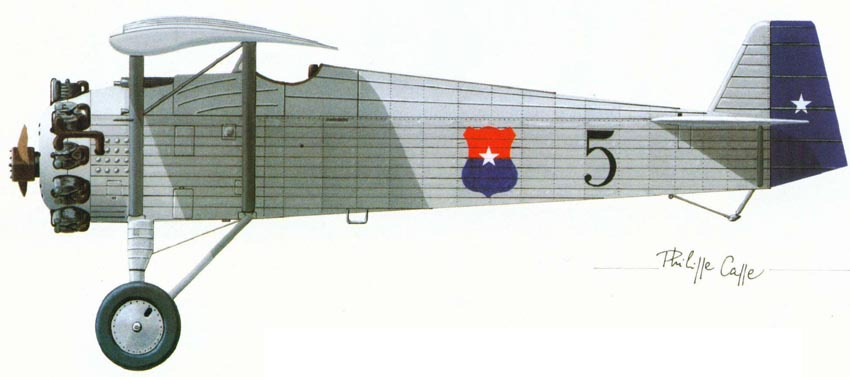
Ar 95 L


NA-74


Ba.65Bis Tipo Chile

Junkers W34ba

Ar 95 W


PC-7

F-16C+ Late
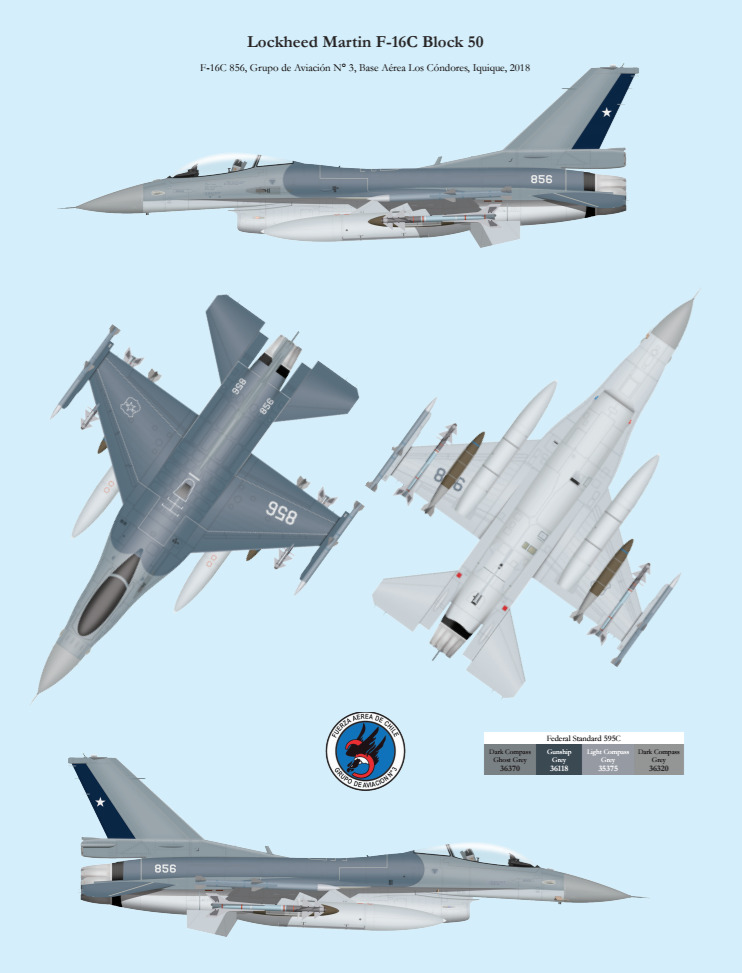
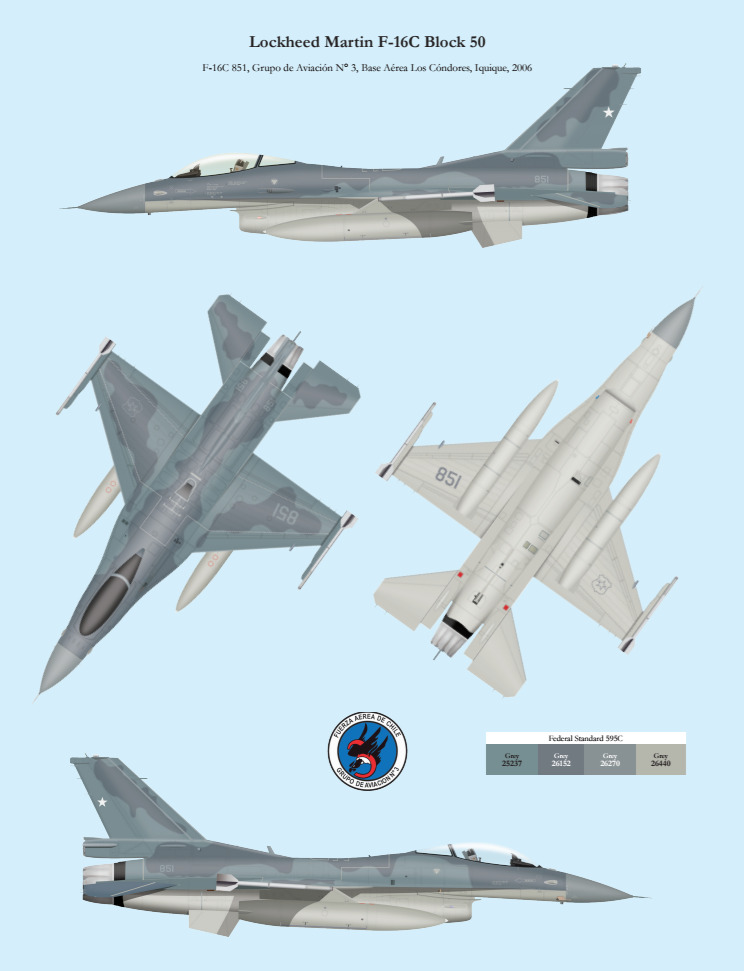
F-16D+ Late
